A global experiment without a “control”
Lee C. Gerhard, Kansas State Geologist (Retired), Senior Scientist Emeritus, University of Kansas
Victor John Yannacone jr, Attorney
A truly global experiment is well underway.
We are all part of it and we have no choice but to participate. There is no “control” population. The experiment will either establish that humans have significant influence on global temperature or that they don’t.
The boundary conditions for the experiment have been set.
On one side is the ever-increasing concentration of carbon dioxide in the atmosphere which is assumed to be the result of human activity and presumed to drive global temperature upwards and make global climate warmer. That is the position of the United Nations and most governments and is supported by numeric computer models.
On the other side is a large and growing cadre of natural scientists who work from data and observations. They see the replication of long-term climate changes that occur in rather predictable cycles. Most of these scientists think that natural processes, particularly solar changes, drive these somewhat regular cycles, such as the Millennial Cycle which includes the Roman Warm Event, Medieval Warm Event, and, perhaps, the current Modern Warm Event); the “Sunspot” (solar activity) Cycle (10–12 years), and the Gleissberg Cycle (60–80 years).
The Sunspot/solar activity Cycle has been amply substantiated, the others are apparent in observations and data. There is recent speculation that the Gleissberg Cycle is influenced or caused by long-term ocean circulation cycles rather than simple solar changes.
Solar Activity Cycles from 1749
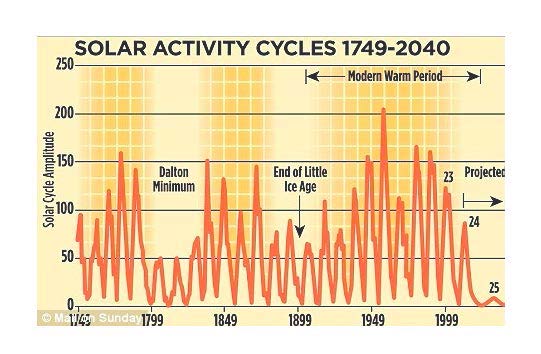
The Gleissberg Cycle
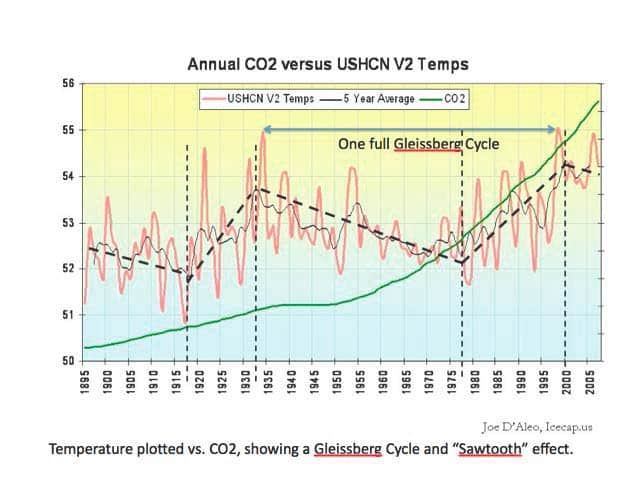
Temperature on this Earth is a dynamic cyclical process!
Global temperature changes from 2500 bce to 2008 AD
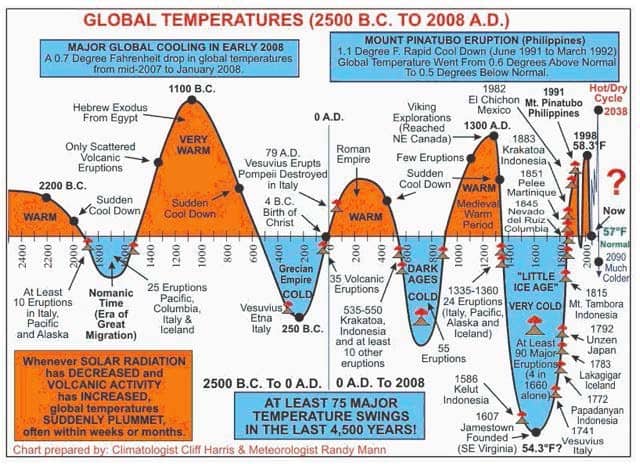
The origins of the Controversy
In 1896, Svante Arrhenius, started this debate on the effect of atmospheric carbon dioxide concentration on global temperature with his original work on atmospheric gases, On the Influence of Carbonic Acid upon the Temperature of the Ground in which he stated that “if the quantity of carbonic acid [carbon dioxide] increases in geometric progression, the augmentation of the temperature will increase nearly in arithmetic progression.”
Arrhenius, who first identified carbon dioxide as a “greenhouse gas” in 1896, in the same paper also showed that carbon dioxide loses effectiveness logarithmically with increasing concentration so that the greenhouse effect attributable to the rise from 100 to 200 parts per million (ppm) is much greater than during the rise from 300 to 400 ppm. A part per million has been likened to a jigger of vermouth in a railroad car full of gin—the recipe for a very very dry martini.
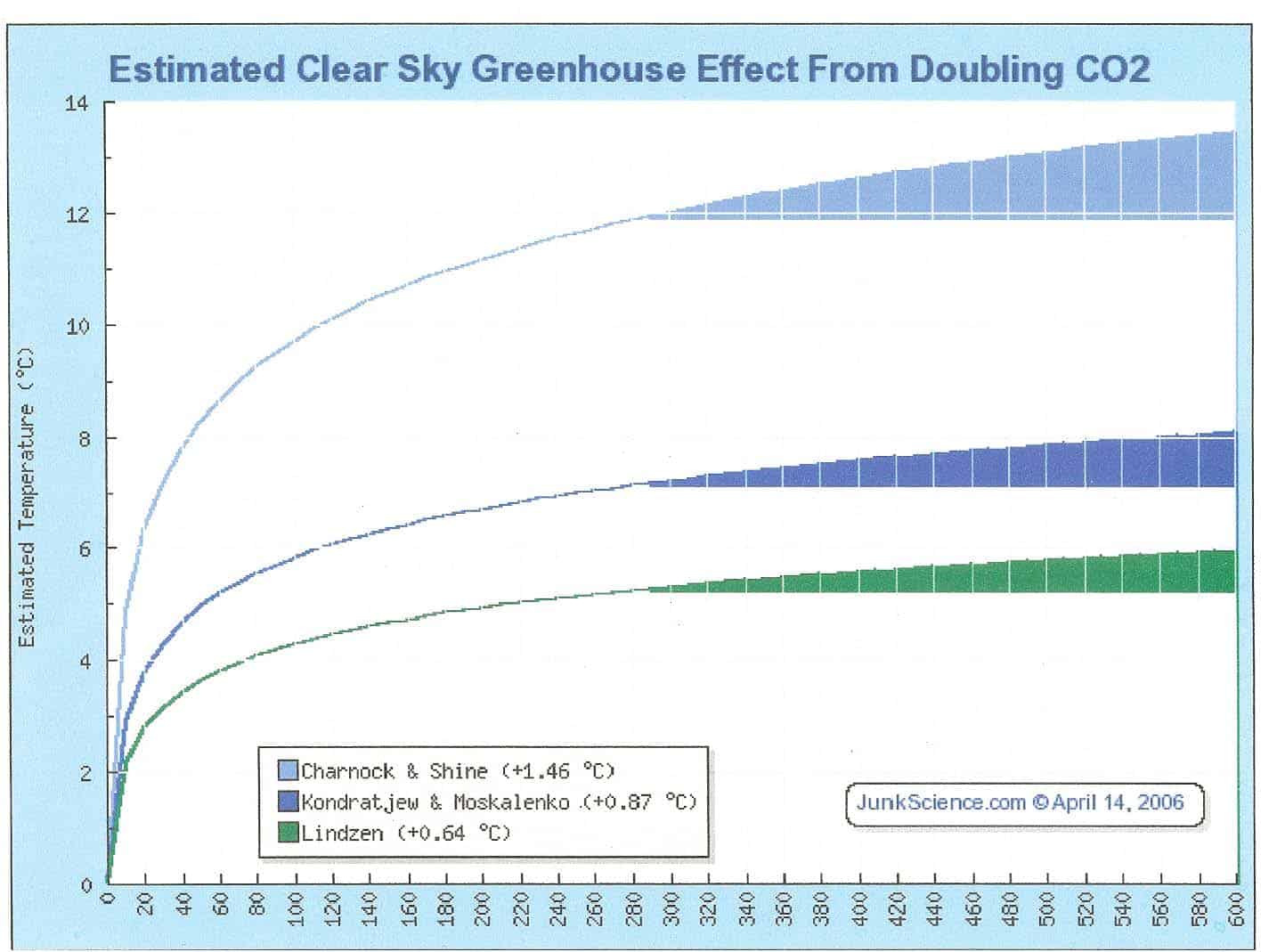
The relationship between carbon dioxide and temperature is not arithmetic. It is logarithmic. As carbon dioxide grows in concentration arithmetically, the effect of that growth is dramatically muted.
If Arrhenius is correct, there will be no statistically significant effect of doubling CO2 on temperature from the present concentration of nearly 400 ppm. The effect will be insignificant because it is logarithmically declining.
Although the numeric computer models theoretically incorporate this understanding and calculate its effect, the human beings who manage the models and interpret their output assume unidentified but offsetting “positive feedback effects” that have not been validated by real world observations or have been found by real world observations to be negative rather than positive. There has been no statistically significant global temperature rise since 1998. Within the margin of instrumental error, the temperature might have actually slightly dropped.
The human contribution to the total greenhouse gas concentration is statistically insignificant.
Current carbon dioxide levels are just a fraction of past levels.
If one were to assign a value of $1000 to the total greenhouse gas content of the atmosphere, the human contribution would be about 28 cents.
Sources of Greenhouse gases in the atmosphere
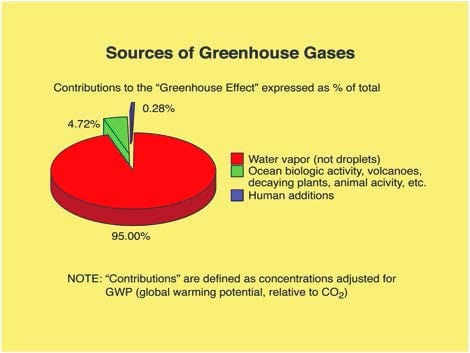
Solar activity currently is much less than normal, approaching the levels last observed in the “Little Ice Age”, a period of cooling from the sixteenth to the nineteenth centuries (~1350 to about 1850). NASA notes three particularly cold intervals: one beginning about 1650, another about 1770, and the last in 1850, each separated by intervals of slight warming.
The Little Ice Age followed the Medieval Warm Period (Medieval Climate Optimum) during the Middle Ages where data from botany, historical documents, and meteorology combined with records indicating prevailing temperature and rainfall in England around 1200 and around 1600 point to a notably warm climate in many parts of the world, that lasted a few centuries around A.D. 1000–1200.
The experiment is proceeding
If the scientists who design, maintain, and rely upon the popular numeric computer models are correct, then soon the global temperature, as measured by satellites now, will rise, despite the current hiatus, and that rise in temperature will reflect the rise in carbon dioxide.
If the scientists who base their forecasts on observation and data are correct, the current hiatus represents the latest Gleissberg temperature maximum, following the previous high in the mid-to-late 1930s. Shortly temperatures will decline over the next twenty to thirty years. After that decline, the temperature will climb back towards the next Gleissberg maximum.
The question of whether we have reached a millennial high or not must be seriously considered in the context of societal welfare. The last downturn from a millennial high cost the Vikings their settlements in Greenland. Some prognosticators have suggested that the solar retreat might presage the next “Little Ice Age.” If that should occur, how will we feed all the people even if greatly increased carbon dioxide levels in the atmosphere fuel increased crop yields?
This grand experiment will end in the next ten years
If the temperature trends up, then the claims of human effects on global temperature will have been substantiated. If the temperature goes down, then natural effects will have to be recognized as the basis of climate change.
